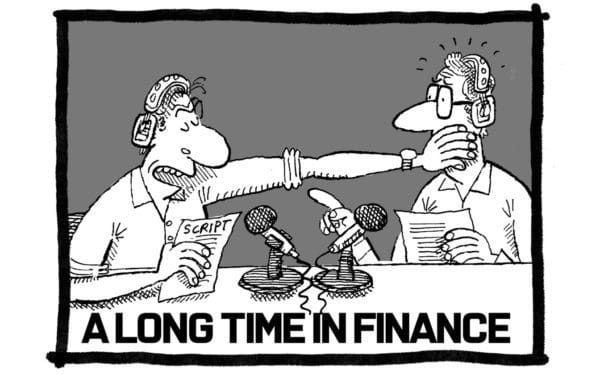A personal view from Ian Stewart, Deloitte’s Chief Economist in the UK. Subscribe to & view previous editions at: http://blogs.deloitte.co.uk/
There’s never a shortage of things that could go wrong with the global economy. One that’s joined the list in recent months is, worries about the health of some emerging market (EM) economies. In a sign of unease nervous investors have been pulling money out of EM equity and bond funds. What’s happening and why does this matter for the rest of the world?
EMs are feeling the effects of the unwinding of a decade of cheap money policies in the US. Low American interest rates encouraged investors to move capital into higher yielding emerging markets equities and bonds. Vast amounts of capital flowed into EMs, pushing up asset prices and bolstering growth. The impact of the unwinding of that great experiment in monetary policy is feeding through to EMs.
The previous Chair of the Fed, Janet Yellen, said that she hoped that the reversal of Quantitative Easing (QE) would be as “dull as watching paint dry”. Yet when QE was being rolled out the effects, especially on asset prices, were anything but dull. And just as buying assets makes money cheap and plentiful so selling those assets should have the reverse effect. Ms Yellen’s hopes for a boring unwinding of QE seem predicated on the process happening very slowly. Like the fabled frog failing to notice the cold water becoming warmer and eventually boiling, the aim seems to be to reverse QE so slowly that markets will hardly notice.
Yet investors could not have failed to notice what’s been happening. Over the last two and a half years the Federal Reserve has raised interest rates from 0.25% to 2.0% and indicated that there’s more to come. Under its Quantitative Easing programme the Fed expanded its balance sheet from $0.9 trillion to a peak of $4.5 trillion, buying up safer assets, mainly government bonds, to push liquidity into the system and drive down interest rates. Now the Fed is running down its stockpile of assets, effectively selling government bonds back into the market.
At the same time US government borrowing is rising to cover the costs of President Trump’s tax cuts. The message is clear: lots more US government bonds are heading to market. That implies lower bond prices which, in turn, means higher interest rates or yields (the yield on a bond moves inversely to its price). It’s not surprising that the yield on US ten year government bonds has risen from 1.4% to close to 3.0% in the last couple of years.
Tighter US monetary policy means that EM economies are facing higher interest rates, a stronger dollar and a weakening of capital inflows. These were some of the ingredients that made up the Asian Financial Crisis of 1997 (more properly the East Asian crisis, in that it hit Indonesia, South Korea and Thailand the hardest). Economies that had seen rapid, credit-fuelled expansions were hit by a Fed interest rate tightening cycle, suffering capital outflows and a squeeze on credit. Those which had issued dollar denominated debt struggled to service and refinance their borrowing. Asset prices tumbled and economies contracted. Governments turned to the International Monetary Fund and the World Bank for support.
The Asian Financial Crisis was a big one, but there have been others, before and since. Each have their own causes, often unique to that country. Weak institutions and political risks frequently play a role. What unites most are an exodus of foreign capital, falling currencies and an increase in the liabilities of the government and the corporate sector.
This all matters for the West because of the risk of contagion, through the financial system, to Western financial markets and the knock-on effect on global demand. In the aftermath of the global financial crisis, with Western growth running well below par, the global economy has been increasingly reliant on EM growth to support activity.
Today’s most obvious EM vulnerabilities are exposed to less committed, potentially flighty investors and dependence on dollar denominated debt. The former risks sudden capital flight. The latter becomes harder to manage as US rates rise and national currencies fall against the dollar.
The risks are real, but are probably less than those 21 years ago, on the eve of the Asian financial crisis, partly because EMs have learned the lessons from previous crises.
Many EM central banks have built up their dollar assets and are better placed to defend their currencies. Fewer EM economies are running current account deficits than in the 1990s, making them less vulnerable to adverse capital flows. And fewer nations have fixed dollar pegs. All of this reduces the risk of big, traumatic currency devaluations which would leave creditors with dollar liabilities in trouble.
Previous crises were exacerbated by an indiscriminate sell off which spread across EM markets, even those distant from the source of the problem. Today there is a better understanding of the very different macroeconomic fundamentals of different EM nations. Future sell offs seem likely to be more focussed. Finally, the pace at which the Fed raises interest rates is, and seems likely to continue, to be far slower than that in the early 1990s.
Overall, then, the fundamentals for EMs look better than in the past. The IMF is certainly optimistic. It sees EM growth accelerating over the next two years, even as growth in the West slows.
Yet for all this EM growth faces a headwind from US monetary tightening. Countries with large current account deficits and high levels of debt are more exposed. Like Ms Yellen, I’m hoping for a dull unwinding of US QE. But, as US interest rates head higher, it’s worth keeping an eye on how EM economies are coping.



